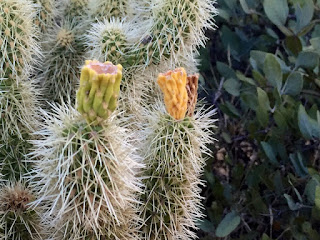 |
Biosphere 2 rises out of the landscape like a futuristic cathedral.
Photograph © 2017 Tina Quinn Durham |
Biosphere surprised me. My memories of it, from the ‘90s, were of sensationalism and a vague sense of science gone bad.
I suppose that one ought to expect failures when attempting to do something incredibly difficult for the first time. After all, no one had ever before attempted to simulate an interplanetary mission to colonize another world. “No material in, no material out” for two years was a truly ambitious goal.
The logistical problems encountered and solved in those first Biosphere attempts will probably save many lives in the future. Scientists learned a great deal from those experiments, including the surprising fact that concrete can absorb oxygen and threaten the stability of a closed ecosystem.
Nevertheless, I had casually dismissed the Biosphere project as irrelevant, a mere tourist attraction from a by-gone era.
Then I found a book in a thrift store about Biosphere, and flipping through it rekindled my desire to see the actual Biosphere project. Yet years passed, the book sat on my shelf unread, and we did not take a day to visit Biosphere.
 |
| The book that spurred me into action. |
In 2017, Hurricane Irma struck the Caribbean island we were supposed to visit. The hurricane removed the fourth floor from our hotel and radically changed our travel plans. We decided to stay closer to home and to explore the state in which we live.
The journey shaped itself around one destination: Biosphere 2, in Oracle, Arizona - 120 miles from our home. Sixteen years after its inception, we were finally visiting Biosphere 2.
More About Biosphere 2
“
Life in Biosphere 2.” In her TED talk, Jane Poynter talks about what it was like living for two years in Biosphere 2, and advises Tucsonans to throw away their rakes.
Biosphere 2 -
the official website
The Wikipedia article on Biosphere 2 - a nice overview, with lots of history





